How do I know if I have bed bugs?
Posted on 8th July 2022 at 08:38
How do I know if I have bed bugs?
Whether you’re in the hospitality industry or just a ‘someone’ who’s sat at home, the thought of having bed bugs fills just about everyone with a sense of fear and revulsion. Just the thought that you’re sharing a bed with a hoard of blood sucking insects is enough to give sleepless nights and for those running places like hotels and guest houses, they face the prospect of complaints, bad reviews and even litigation.
When we get an enquiry for bed bugs most often the person on the phone is distraught and really stressed at the thought of having bed bugs and this spills over into situations where people have just seen an insect on their bed and now want a treatment no matter if its bed bugs or even the cost. Fear is a factor that we cannot overlook, and this will be exploited by many in the pest control industry.
We recently had a call for bed bugs and the photos sent showed what was clearly a small beetle, an insect that is not regarded as a pest and something that’s flown in through an open window. Because the caller had been getting bites, they were adamant that they wanted a treatment which we refused to do; this is fear and amount of explanation would shake the person off demanding a treatment.
So, we have put together a short blog with the five signs of a bed bug infestation; these are the things to be on the lookout for if you suspect that you have bed bugs. If these aren’t present, its going to most likely that you don’t have them, and any bites or rashes are coming from someplace else. There is no need to be fearful and no requirement for expensive and pointless treatments.
Sign 1
Bloodspots.
Bed bugs are ferocious eaters and will bite several times when they feed, they also feed every other day of so and pattens can be found in bites and bloodspots. The insect just wants the solid particles from our blood, and they excrete the liquid part immediately, so its common to find pinpricks sized black spots on sheets and pillowcases.
They will also release more liquid when they get back to their hiding place, bed bugs will hide in cracks and small gaps, one of the most common places to find bed bugs is on the headboard. They will slide into the gap between the wooden upright that holds the headboard and the bed base or the mattress. Loosen off the plastic nuts and slide the wood up a couple of inches; if you have bed bugs, you’ll see blood spots here for sure.
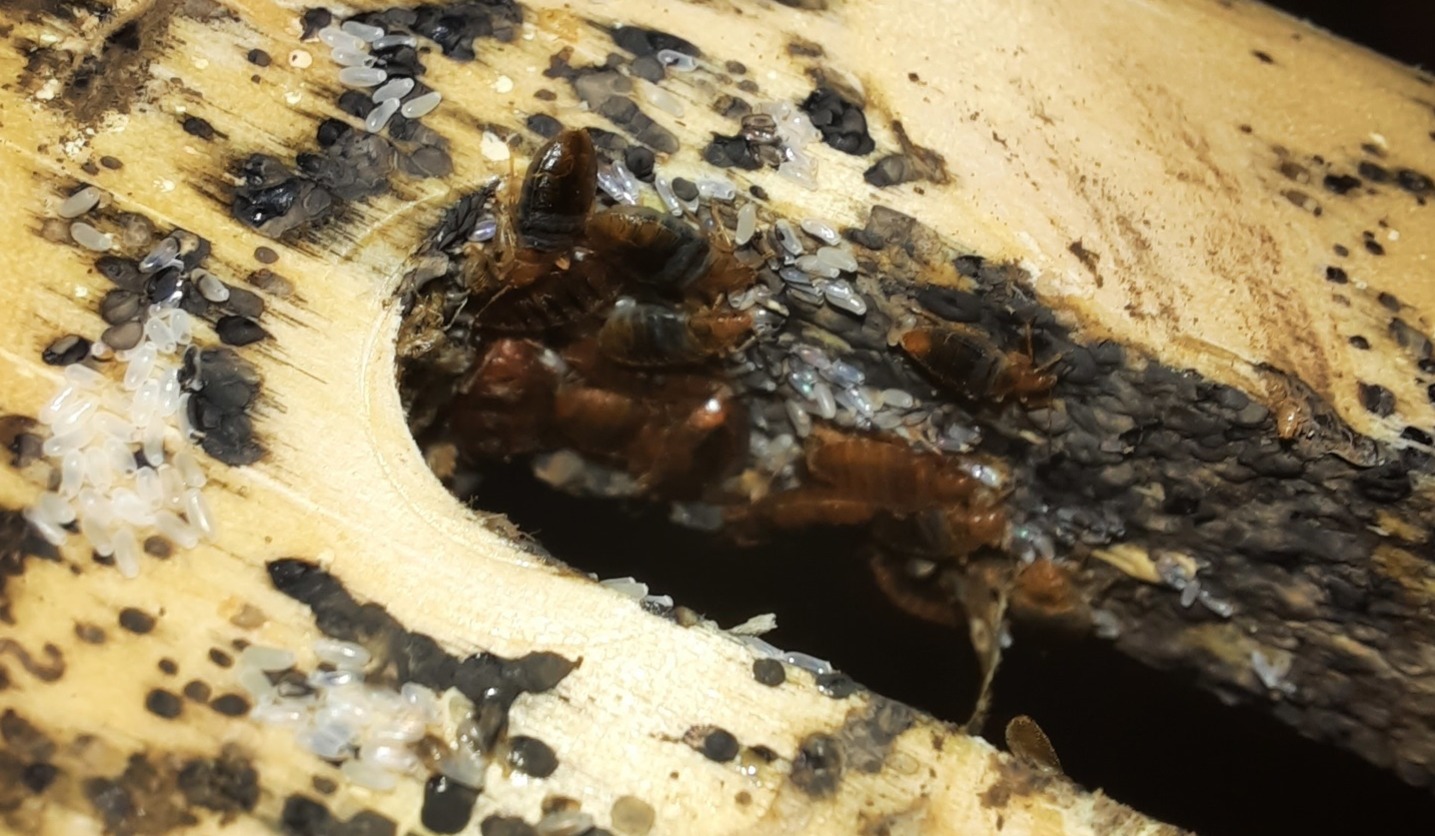
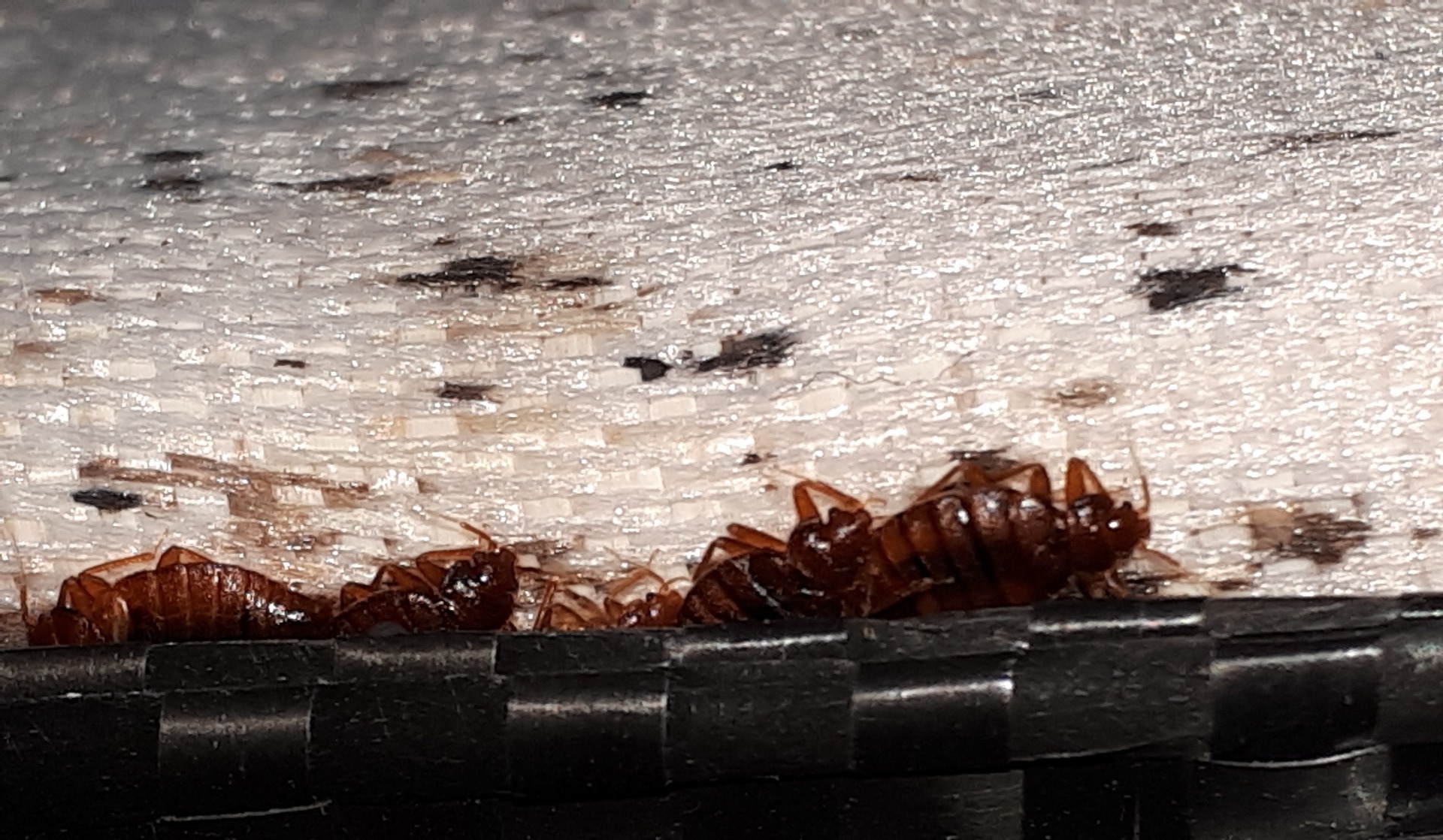
Wherever bed bugs hide you'll find bloodspots and occasionally the insects as well.
Sign 2
Discarded skins
Bloodspots are the most reliable way of testing for a bed bug infestation but if you’re in a situation where there’s been a long-term infestation you will find discarded skins. The insects grow in a way where they have to shed their outer thick skeleton as they mature, these skins fall to the floor or onto part of the bed base and start to build up.
A reddish orange in colour the presence of discarded skins tells you that there has been a bed bug problem for some time, as not everyone reacts to the insect bites and some people get zero reaction, finding what looks like bits of tiny peanut skin under the bed could be important.
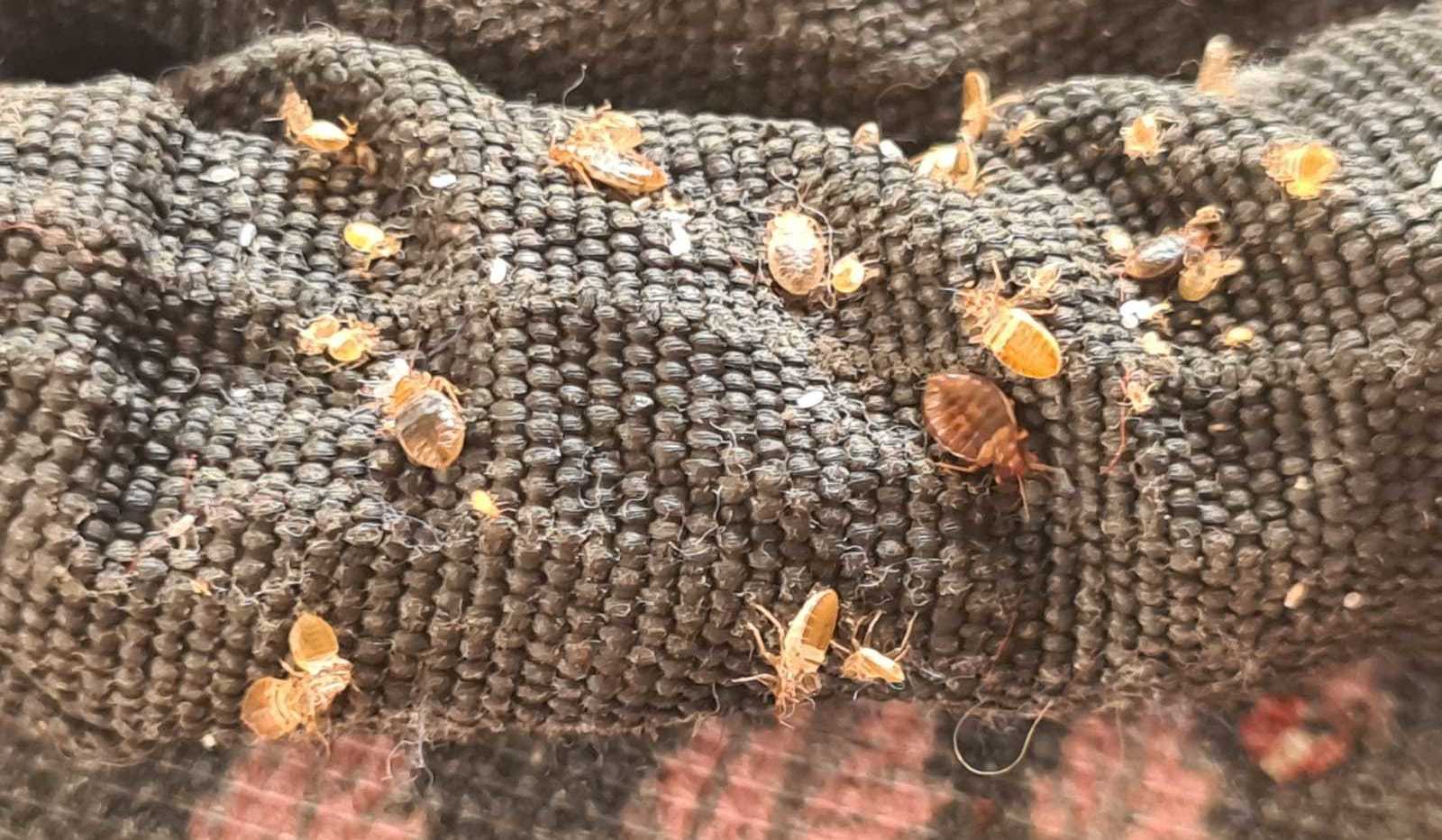
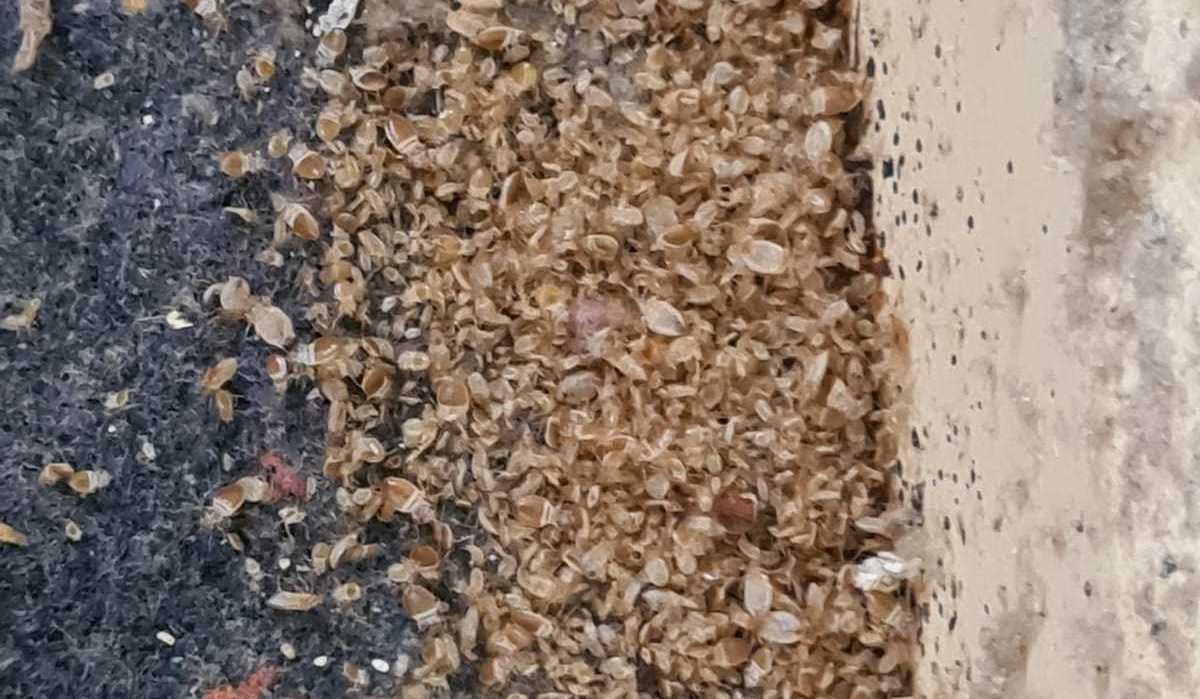
The discarded skins look like semi-transparent versions of the insects as they are just the shedded exoskeleton.
Sign 3
Insects.
We’ve had customers who have had a bad bed bug problem and having seen the live insects but thought that they were ladybirds or just a beetle. The horrible truth is that you are the host, its your blood that these insects drink and they appear when you’re in that space. You may see a lone bed bug wandering across the sheets when the alarm goes off and you wake up, don’t dismiss this as a harmless insect, a sure-fire test is to squeeze it – if blood comes out then, yes you’ve got bed bugs.
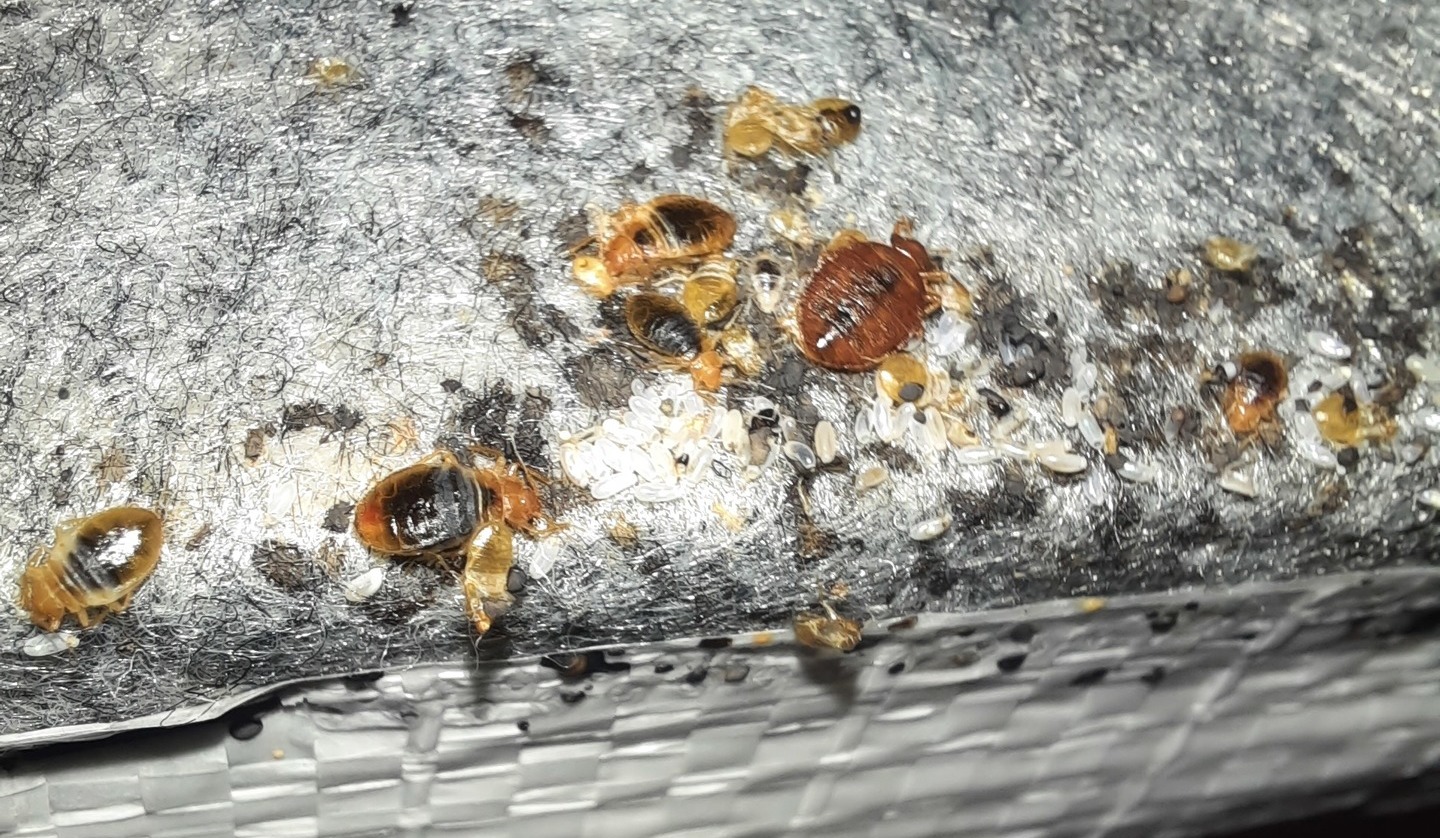
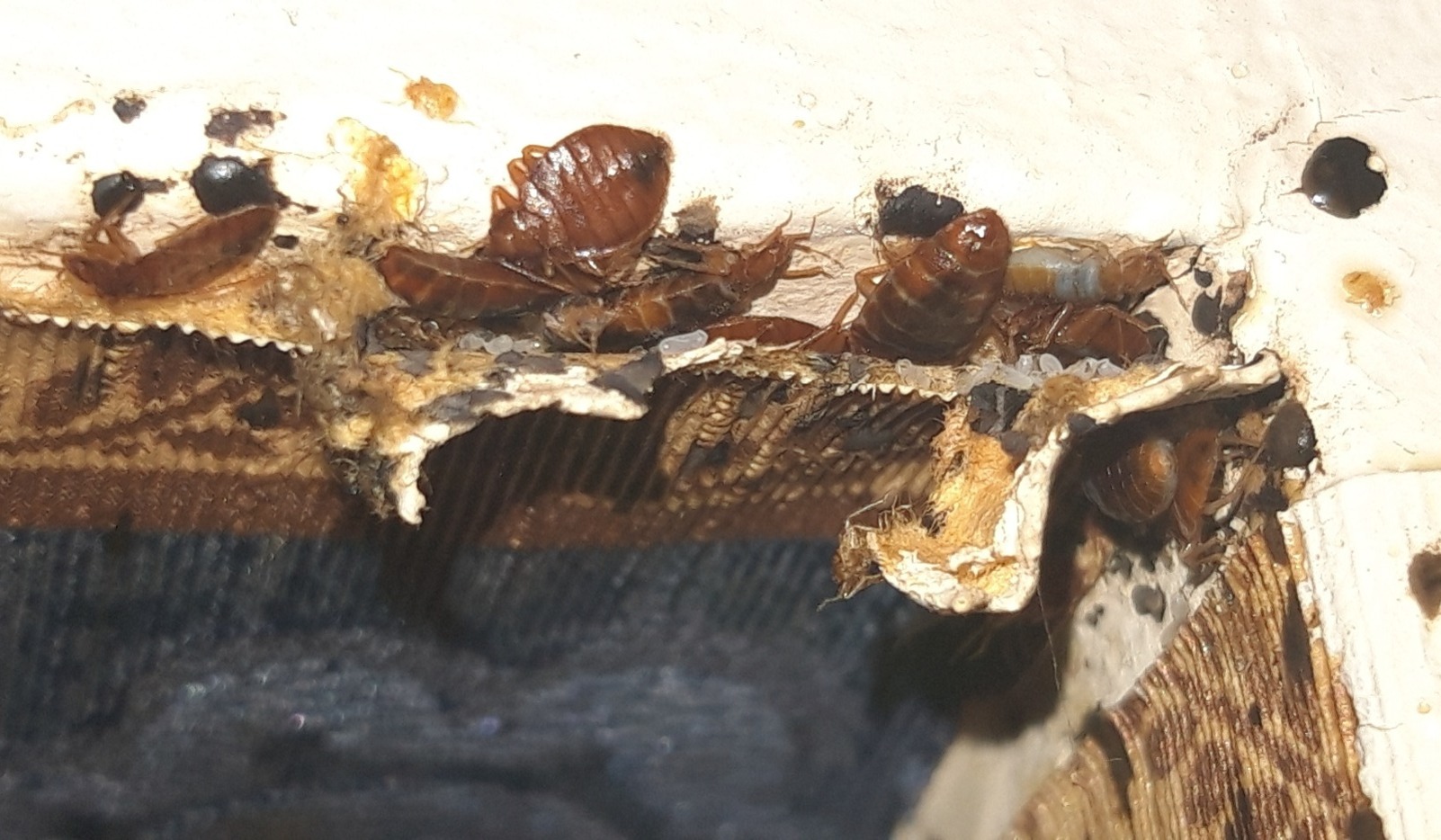
Sign 4
A musty smell.
Bed bugs hide away in small gaps around the bed, you’ll find them roughly in three bands where we leave odours– the top of the bed around our head so look on the headboard paying special attention to the material that webs across the back.
You’ll find bed bugs in the middle of the bed, and these will be under wooden slats on a frame bed and between the two large sections of a divan bed. Look at the openings for drawers as they’ll often hide in the exposed woodwork of the interior of the bed. And lastly where our feet go, the bottom of the bed, again they will be hiding under slats and where a bed has wooden slats, they will use any cracks of splits in the wood to rest up in.
Where bed bugs accumulate so does their scent, all those blood deposits and bacteria start to give off a musty smell that is detectable and smells like a damp sports towel that’s been left in a bag all weekend or like slightly rotten fruit depending on your nose and sense of smell.
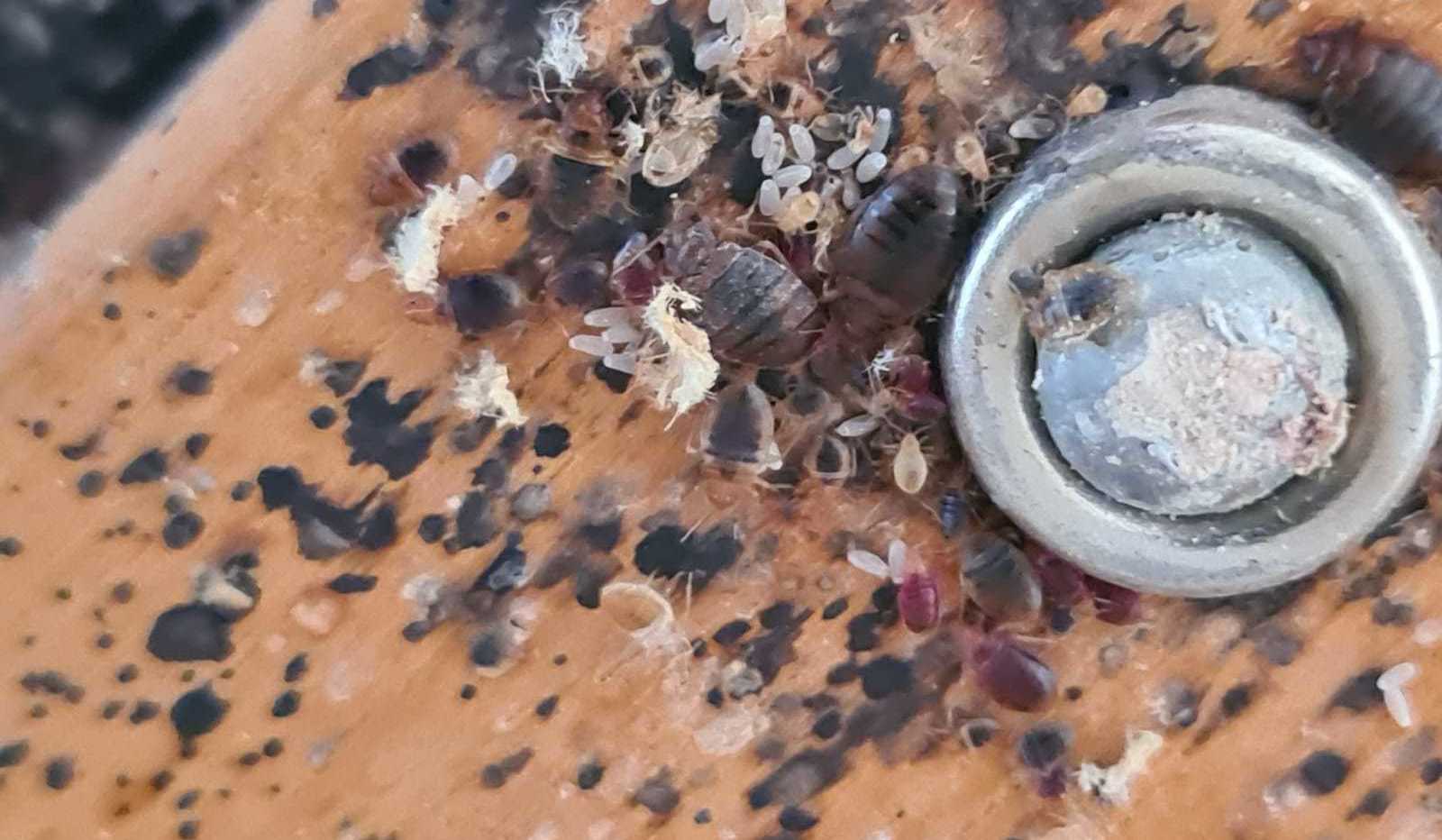
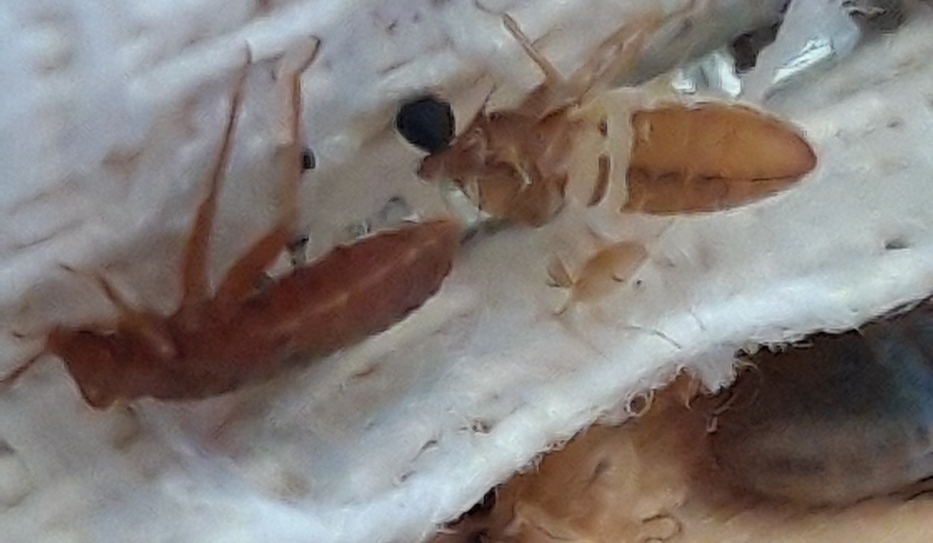
Sign 5
Bites.
This is not especially helpful to those in the hospitality industry but if you think that you’ve picked up bed bugs and bought them home, the insects have a habit of biting along the line of exposed flesh. When they come out to feed, as they crawl across the sheets or pillowcase, they encounter us and so they’ll begin feeding immediately, once they’ve consumed enough blood they will defecate (again back to bloodspots) and then feed again. Quite often this forms a patten of bites where you’re skin rests on top of a sheet or where your nightclothes finished.
We shouldn’t worry about having bed bugs, all too often people make something larger and more ominous that it really is and that’s the case with bed bugs. Having slept a night in a hotel bed that had bed bugs I really understand how traumatic it is but when you consider that bed bugs have been found not to be a vector of disease, unlike mosquitos, we should remain calm and act rationally if we think that we have bed bugs. If you don’t see one of these five signs, then any bites or rashes that you get are from another source and so a treatment to your bed will not solve the problem.
Tagged as: Bed bugs
Share this post:





